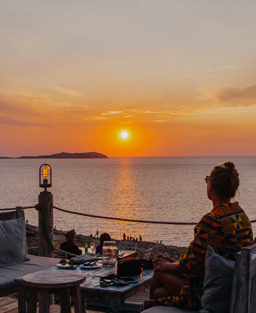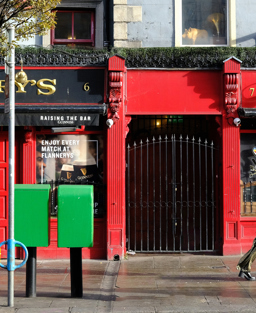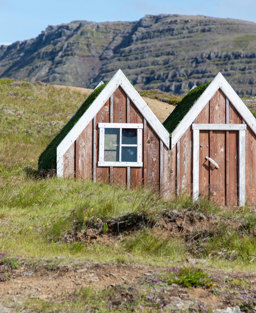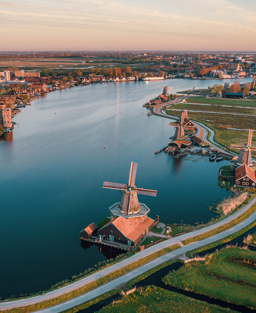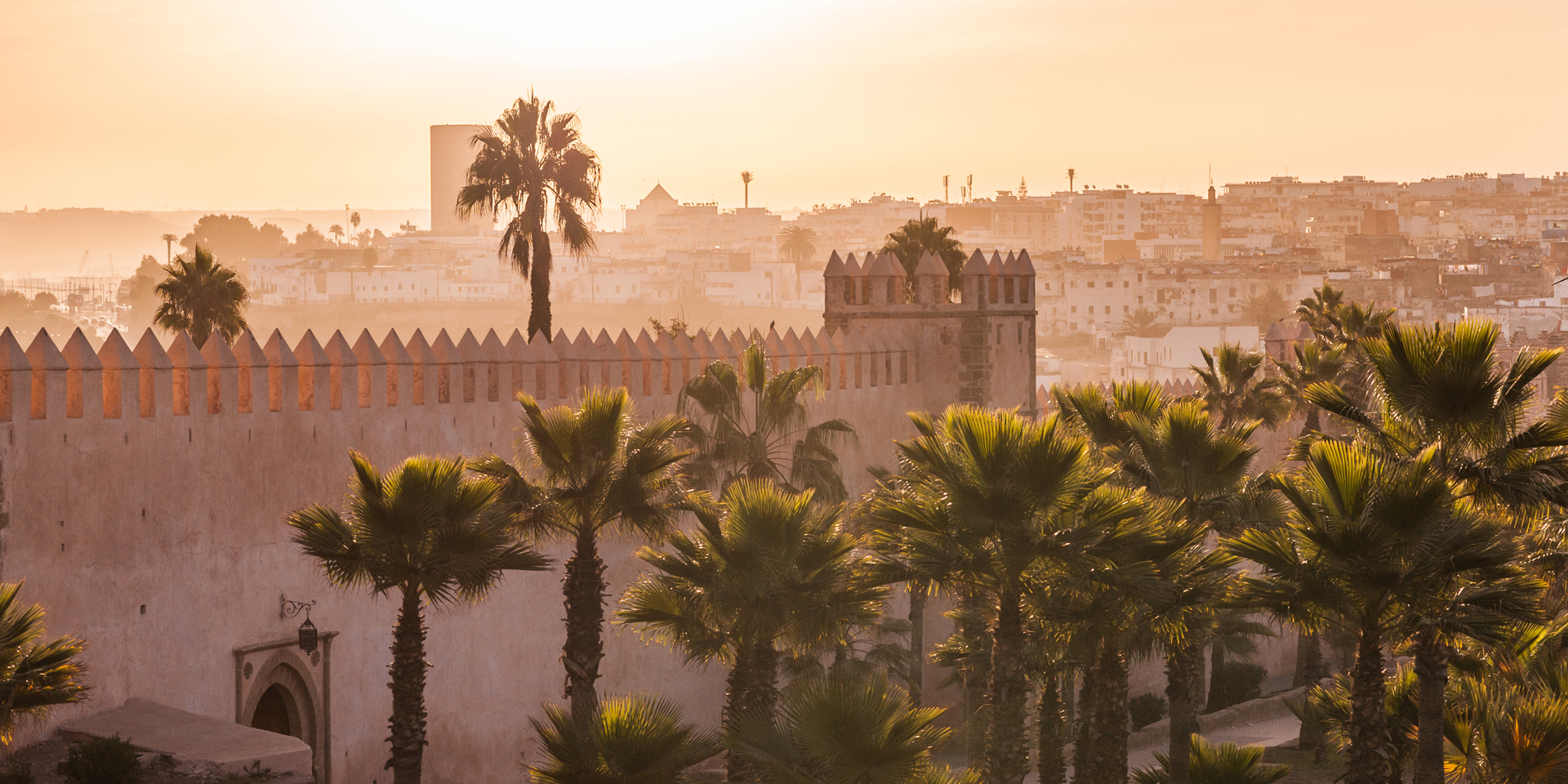

- Promotion
A tale of two cities: why Rabat and Graz should top your winter travel list
Whether it’s seaside medinas or forest-flanked fortresses you’re after, magical museums and great gastronomy are guaranteed. Welcome to two very different, lesser-known spots you’ll want to visit before everyone else does
17/09/2025
Words: Agatha Zarzycki
Picture your perfect year-round destination: the temperatures are mild and history and culture are in abundance (while crowds are not). Are you imagining colourful, coastal charm or a cosy, castle-style setting? Either way, there’s good news. BA Euroflyer has launched new direct flights from London Gatwick to Graz, Austria’s mediaeval marvel, and Rabat, a relaxed and refined alternative to Morocco’s more bustling metropolises. Here’s what makes both cities irresistible.
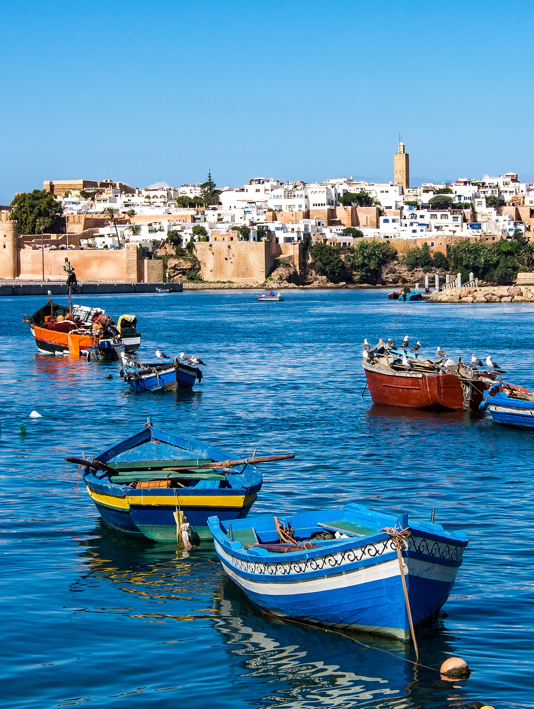
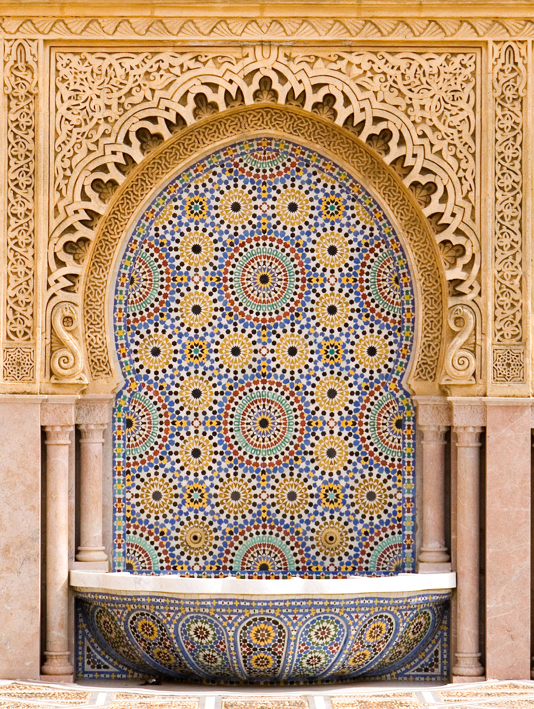
Traditional boats moored on the Bou Regreg river in Rabat; zellige tilework fountain by the Hassan Tower. Opening image: the Kasbah of the Udayas in Rabat
Ravishing Rabat
The best place to start this Unesco World Heritage Site’s spellbinding story is in the garden-cloaked Chellah Ruins on the southeastern edge of the city, time travelling through the Phoenician, Roman and mediaeval eras. Then take a scenic, 30-minute walk northwest for the 12th century – a turning point in Rabat’s identity – at Hassan Tower, the incomplete red sandstone minaret commissioned by Sultan Abu Yusuf Yaqub al-Mansur and now the city’s historical heart.
But it’s the Mausoleum of Mohammed V around the corner that is most striking, its white Italian marble façade and green-tiled pyramidal roof shimmering like silk dipped in sunlight. Take a break for lunch – some of the city’s finest seafood (including tender snapper, shrimp and squid tagine) is close by at Le Dhow – expect dining aboard a boat moored on the Bou Regreg river.
Afterwards, head 2km west to the Kasbah of the Udayas – perched on a cliff at the mouth of the river – which dates back to the 12th century. Here narrow, cobbled alleys weave between whitewashed houses, featuring blue accents that reflect an Andalusian influence. Don’t miss the fountain-festooned Andalusian Gardens – created between 1915 and 1918 under the French protectorate period – brimming with citrus trees and bougainvillea, before stopping by Café Maure for mint tea and almond cookies, and the Medina for souk souvenirs.
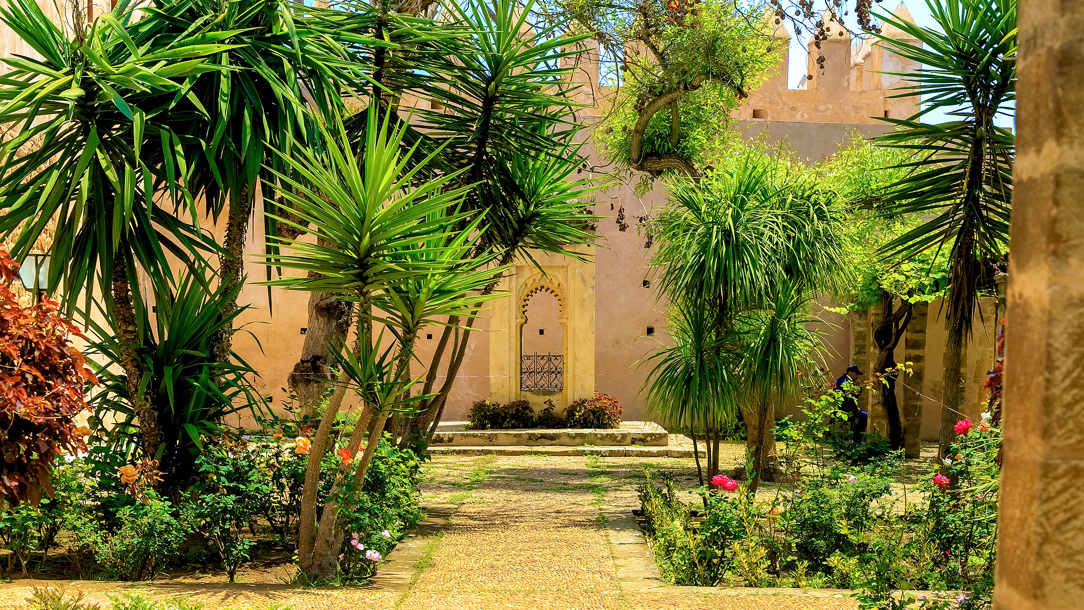
Andalusian Gardens within the Kasbah of the Udayas in Rabat
Just ten minutes on foot, the kasbah’s French legacy continues to be seen in the ‘new city’, an urban expansion from 1912 to 1956 that helped transform Rabat into today’s modern capital: think wide, palm-skirted boulevards and Neo-Moorish and Art Deco administrative buildings.
Then it’s time to admire Rabat’s present at the nearby Mohammed VI Museum of Modern and Contemporary Art. Founded in 2014, it’s the first large-scale museum in Morocco dedicated entirely to modern and contemporary art since the nation’s independence from France in 1956.
Also worth experiencing is the Mawazine Festival, a nine-day celebration of music and culture in the summer. In need of some downtime after all the sightseeing? Take a ten-minute taxi ride to Rabat Beach and its long stretch of soft, golden sand for sunbathing and stunning views of the Kasbah of the Udayas. Watching the glimmering sea splashing onto its fortified, ochre-shaded stone will feel like a dream.
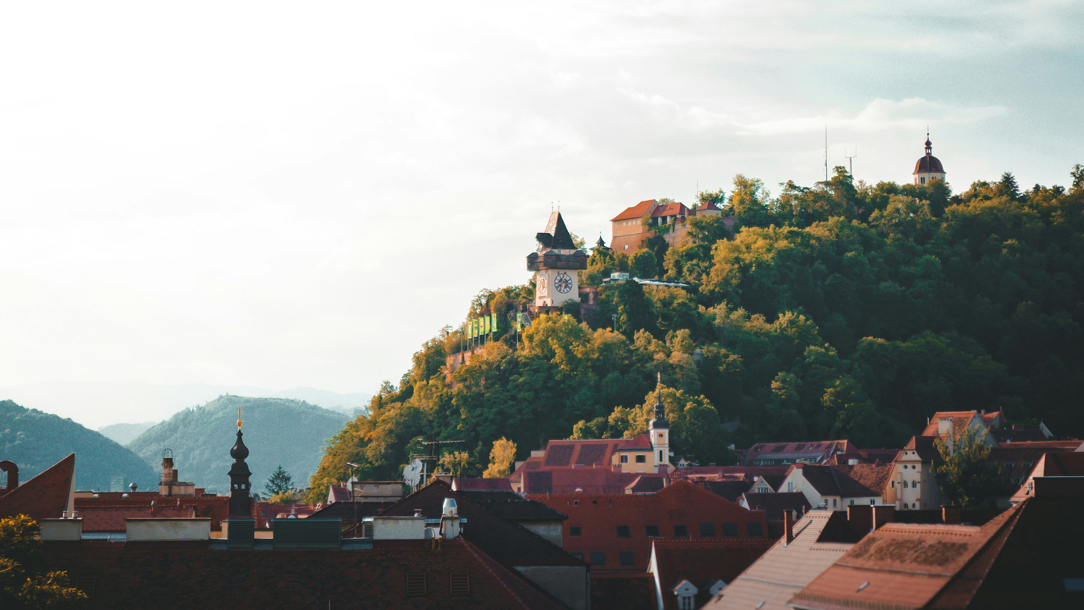
The landmark Schlossberg in Graz (Danie J Schwarz/Unsplash)
Gorgeous Graz
Its name comes from the Slavic word gradec, meaning ‘small castle’, apt for a city that began as a fortified settlement in the 6th century, thanks to its defendable position in the Mur River Valley. But it wasn’t until Graz’s rise in mediaeval times that Schlossberg (Castle Hill) became the star of the city, its stone fortress making eyes at the cool alpine river. The fortress itself (minus the clock and bell towers) was destroyed by Napolean’s forces in the early 1800s, but Castle Hill is as dominant as ever, rising 473m over a sea of terracotta tiles, where you’ll find the Gothic Graz Cathedral and Mausoleum of Emperor Ferdinand II, its green onion-shaped dome appearing like a jewel in the sky.
It’s the coming together of centuries that earned Graz its Unesco City of Design accolade: imagine mediaeval lanes, Renaissance courtyards from the Habsburg Era – when Graz had a glow-up and became inner Austria’s capital – and the Neo-Baroque Graz Opera House, created to symbolise the city’s prestige during the peak of the Austro-Hungarian Empire and still an active home for performing arts. Then there are the city’s modern masterpieces, such as the blue, biomorphic Kunsthaus Graz (‘The Friendly Alien’) and Murinsel, a futuristic floating island.
Top tip: purchase the Graz Card, an all-in-one city pass providing free public transport, plus access and discounts to major attractions, including must-see Schauspielhaus Graz, one of Austria’s largest theatres, which was built in 1825. The city is well-equipped for visitors with mobility needs, too, with accessible transport, attractions and accommodations.
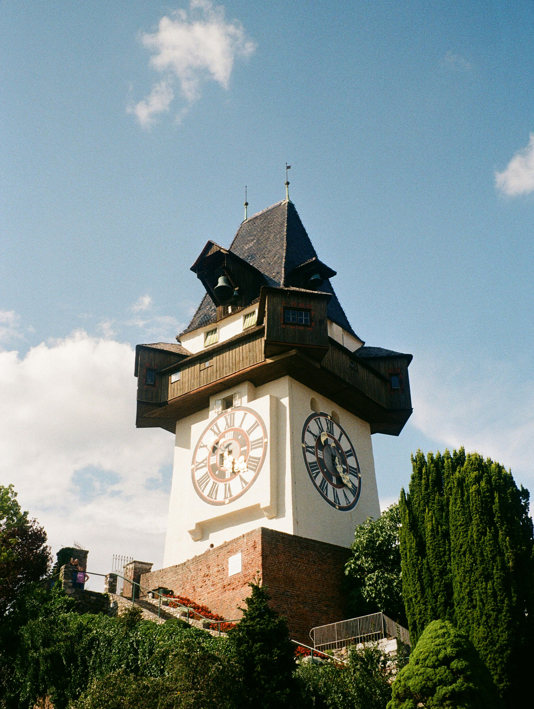
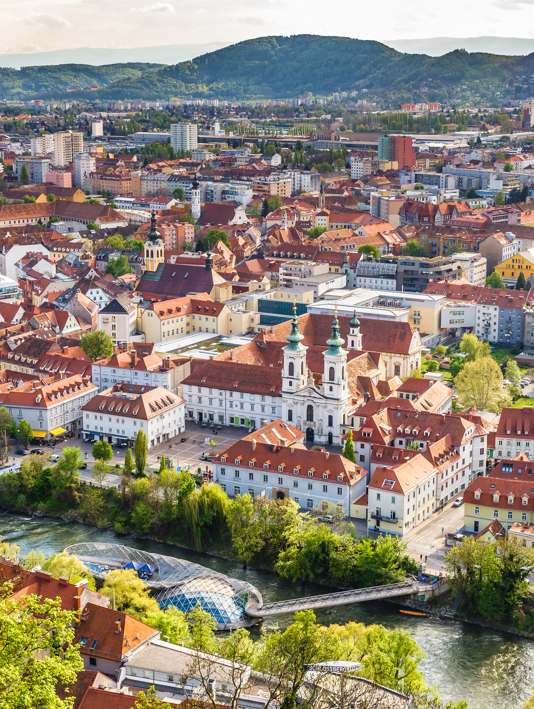
Graz Clock Tower on the Schlossberg (Elina Verheles/Unsplash); Graz’s Old Town is a Unesco World Heritage Site
Graz excels at more than design and the arts. It’s also one of Europe’s top foodie destinations, offering everything from traditional Styrian dishes to creative culinary cuisine. Begin the morning with a classic Viennese-style coffee and flaky apple strudel at Grand Café Kaiserfeld, dating back to the late 19th century – its large windows with wrought-iron details are people-watching perfection.
For mid-morning snacks, the stalls of Kaiser-Josef-Markt selling fresh, regional cured meats, cheeses and pumpkin oil (aka Graz’s liquid gold) should hit the spot. Save space for an authentic Styrian lunch at cosy Gasthaus Stainzerbauer, serving hearty favourites such as backhendl (fried chicken) and kärntner kasnudeln (buttery dumplings filled with cheese and herbs).
Graz is the capital of the province of Styria, famous for its unique white wines, so a visit to its celebrated family winery, Weingut Strohmeier (a short tram ride from the city), is essential. Try the Ried Kranachberg, an excellent Sauvignon Blanc with mineral-driven character. Then it’s time for the main event: a decadent dinner at contemporary Aiola Upstairs, perched on Schlossberg, whose innovative fare often features pumpkin seed oil, foraged herbs and Styrian apples. Indulge in venison ragout with spätzle, take in Graz’s soft, sparkling lights and thank your lucky stars that those clever Slavic people in the 6th century decided to set up camp here.


